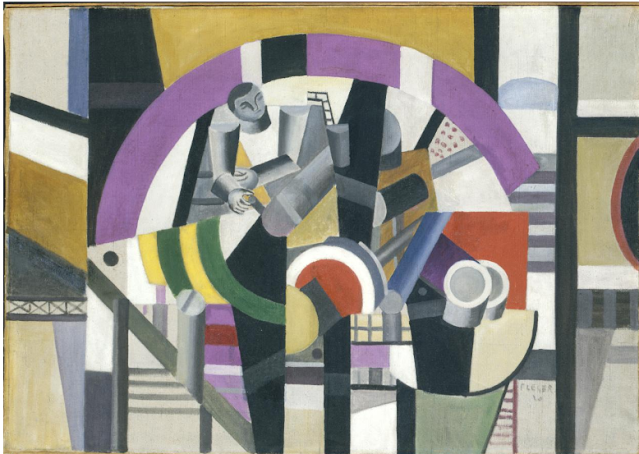Gustave Courbet, "The Stonebreakers"
This week I bring you a very different image from ones previously reviewed. The artist is Gustave Courbet (1819-1877) and the title is The Stonebreakers.
Courbet was one of the most important French artists of the mid nineteenth century. Romanticism was the popular movement approved by the Salon, but Courbet was one of the few who broke from that tradition to establish Realism. Here, in The Stonebreakers, we can see exactly what the term Realism means. From what I have read, Courbet saw this scene by the side of a road, and he immediately returned to his studio to paint it. We see two men, the kneeling man lifting his pic, while the younger carries the basket of broken rock. We can only imagine they were able to sell the stone to help earn a living.
Looking carefully at the scene their torn clothing and wooden shoes help illustrate the men's plight. On the extreme right, mid canvas is depicted a metal pot, cloth and spoon so we can assume the men brought their lunch have spent the day here. The men do not touch, or even acknowledge one another in their work, so I find a certain sadness in this very realistic image. We can only guess at the two men's relationship.
The composition is straightforward. The canvas is divided in half with each side grabbing our attention. One man is no more important than the other. The color palette is subdued, with lots of brown. Only in the upper right corner the blue sky is visible. The figures are nicely lit, casting long shadows so we can assume it is late in their day.
The Realists broke established Salon tradition and established the model for a new generation of artists, namely Monet and the Impressionists. Although the French Salon would remain important for the remainder of the century, the independent movements were on their way.
The Stonebreakers was painted in 1849. It measured 64.9 inches high and 101 inches across. Sadly the painting was one of many being transported to safety in 1945 in a large van, near Dresden, Germany. The truck was attacked by Allied bombing and all works destroyed.
Make Art a part of your life, it's a beautiful thing to do.




With a limited palette, he really uses color values to highlight his subject, almost illuminating the two figures. I think they could be father and son. Though they are not touching or interacting, they seem very connected by the work at hand. The desolate terrain contributes to the suggestion of a hard life. I think the artist gives dignity to the stonebreakers, by showing their strength, commitment and determination to the job at hand. The many details he gives to show their hard life of poverty also tells us they are good honest workers and will persevere to survive. Courbet gives honor to these laborers and I feel a sympathy for them.
ReplyDeleteGreat comments, i totally agree, Courbet has given honor and dignity to these laborers. Thanks for adding your great thoughts!
ReplyDelete